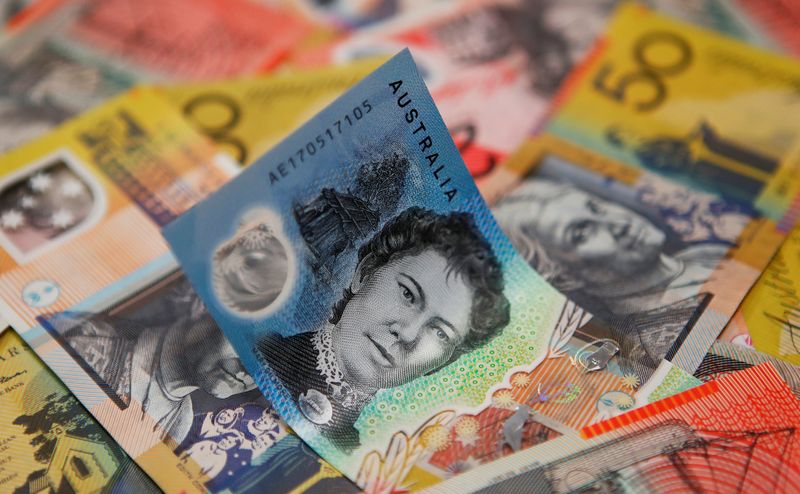LONDON/SINGAPORE (Reuters) -The euro rose slightly against the dollar on Wednesday while the yuan hit its strongest level in over a year, as China’s aggressive stimulus package provided the latest shot in the arm for risk appetite.
The U.S. dollar – a traditional safe-haven currency – came under pressure after China’s aggressive stimulus moves on Tuesday fuelled bets of another outsized U.S. rate cut in November, adding to headwinds for the greenback.
Despite weak German economic data and concerns surrounding the French budget, the euro has held up “extremely well” against the dollar this week, said Jane Foley, senior forex strategist at Rabobank.
The euro’s resilience was partly driven by a perception that a better outlook for Chinese demand could feed its way back through into Germany and through into Europe, she said.
The euro gained 0.06% to $1.1187, moving back towards a 13-month peak of $1.1201 hit in August.
The Australian and New Zealand dollars backtracked after reaching multi-month peaks earlier in the session as China’s stimulus was seen as a good sign for the countries’ exports.
“Judging by the financial market reaction, those announcements were actually bigger than market expectations,” said Carol Kong, a currency strategist at Commonwealth Bank of Australia (OTC:CMWAY), noting China’s stimulus measures particularly benefited currencies with strong links to the Chinese economy like the Australian and New Zealand dollars.
Data on Wednesday showed Australian domestic consumer prices slowed to a three-year low in August, while core inflation hit its lowest since early 2022, weighing on the Aussie which traded at $0.6882 after peaking at $0.6908 in the early Asian session, its highest since February 2023.
The kiwi rose to a nine-month top of $0.63555, before declining to $0.6318.
Markets globally were basking in the afterglow of China’s latest slew of support measures announced on Tuesday ranging from outsized rate cuts to aid for its stock market.
In line with its broad easing measures, the People’s Bank of China on Wednesday also lowered the cost of its medium-term loans to banks to 2.00% from 2.30%.
The onshore yuan rose to a 16-month top of 7.0012 per dollar while its offshore unit briefly strengthened past the key psychological level of 7 per dollar and peaked at 6.9952 per dollar.
“The momentum forward for the yuan should take cues from China’s equity markets as a proxy for sentiment,” said Christopher Wong, a currency strategist at OCBC.
Elsewhere, sterling retreated 0.2% to $1.33835. It had risen earlier to a level not seen since March 2022 at $1.343, helped by less aggressive expectations of rate cuts from the Bank of England this year as compared to the Federal Reserve.
Markets are now pricing in a 59.1% chance of a 50-basis-point rate cut at the Fed’s next policy meeting, up from just 37% a week ago, according to the CME FedWatch tool.
Data on Tuesday showed U.S. consumer confidence unexpectedly fell in September, amid mounting worries over the health of the labour market.
“Consumers remain downbeat on the economy,” economists at Wells Fargo said in a note.
“While we expect there are a number of reasons households are growing more pessimistic, the moderating labour market remains top of mind.”
Against a basket of currencies, the dollar last stood at 100.43.

The dollar index fell more than 0.5% in the previous session, its largest one-day percentage fall in a month.
The yen eased 0.56% to 144 per dollar.
To read the full article, Click Here

